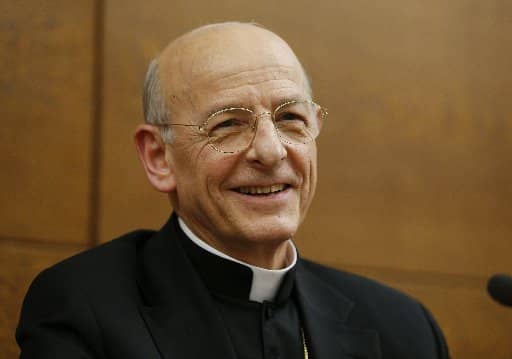Anti-Christian persecution can be a straightforward result of explicitly religious motives, such as Islamic State militants who beheaded 21 Coptic Christians from Egypt in Libya in February 2015, or assassins professing loyalty to ISIS who slit the throat of French Father Jacques Hamel in July 2016.
At times, however, Christians fall prey to complex political, military and cultural movements that may have little to do specifically with religion. New developments in the Democratic Republic of Congo offer a good illustration of the point.
This week, a group of 25 Catholic seminarians was evacuated by helicopter by UN peace-keeping forces from a seminary in Malole in Kananga, located in the Kasai-Central province of the country in the south, near the border with Angola. The evacuation followed an armed assault on their seminary in late February.
That assault was led by troops loyal to the late Kamwina Nsapu, a tribal leader who was killed by the Congolese military in August 2016. The evacuated seminarians were taken to Mbuji-Mayi, a city of at least 1.5 million which serves as the capital of the nearby Kasai-Oriental province.
The seminarians had been blocked from taking a road that leads to Mbuji-Mayi because it was under the control of Nsapu forces, and thus had to be rescued by air.
Since the most recent uprising broke out, hundreds have been killed and thousands displaced in central Congo in recent months in fighting between forces associated with Nsapu and the national security forces.
Nsapu had vowed to rid the Ksaia-Central region of corruption, and his followers suspect a conspiracy to destroy his base of support by elites wishing to extend their grip on power. Observers say the situation appears to be becoming more unstable, with intensified violence a strong possibility.
Catholic leaders have been among the most outspoken elements of civil society denouncing the expansion of violence. For instance, in a mid-February statement Bishop Félicien Mwanama Galumbulula of Luiza complained of “exceptional violence and unimaginable atrocities against the population” committed by Kamwina Nsapu militias.
In Congo, Catholic leaders generally play a robust political role as spokespersons for civil society. The current Archbishop of the national capital Kinshasa, for instance, Cardinal Laurent Monsengwo Pasinya, once served in the early 1990s as the de facto head of state during a transition from the regime of strongman Mobutu Sese Seko.
In late 2016, Congo’s Catholic bishops brokered a peace deal between the government of President Joseph Kabila and the country’s political opposition, though more recently that accord has appeared to disintegrate amid renewed bouts of violence.
There’s considerable evidence that the Church’s activism often makes Catholic facilities and personnel into targets for different social forces with grievances of various kinds.
In the wake of the February attack on the seminary, Monsengwo issued an appeal about “the alarming security situation” in the country.
On February 19, a parish church in the Limete municipality of Kinshasa was desecrated by a gang of youth. Monsengwo wrote that “they overturned the tabernacle, ransacked the altar, smashed some of the benches and attempted to set fire to the church. The material damage is considerable.”
Monsengwo said he believes the Catholic Church is “being targeted deliberately, in order to sabotage her mission of peace and reconciliation.”
Catholic nuns have also come under assault. In the eastern city of Bukavu, the Daughters of the Resurrection, an order of African sisters, recently closed seven convents after the killing of several sisters. A Franciscan sister, Marie-Claire Kahambu, was stabbed to death in December.
“When sisters are being attacked and terrorized, it is the universal church which is being targeted,” said Father Chrisantus Ndaga, deputy secretary-general of the Association of Member Episcopal Conferences in Eastern Africa.
In these cases, Christians suffer violence not necessarily for their doctrinal beliefs, but for the values and humanitarian stances those doctrines inspire.
According to the Center for the Study of Global Christianity, Congo has been the largest producer of new Christian martyrs in the world for the last two decades, at one stage averaging almost 90,000 Christian victims a year.
While acknowledging that many of these deaths might not meet traditional tests for martyrdom, in the sense of occurring for exclusively religious motives, director Todd Johnson nonetheless insists that the majority have died in what he calls a “situation of witness.”
“Rebels, for example, often single out Christians because they do not cooperate with malicious plans to expand rebel territory,” Johnson said. “Such Christians, when they are killed as a result of actions springing from their faith, fit our definition of ‘martyrs’, whether or not those actions were accompanied by explicit proclamations of their faith.”
In Catholicism, the principle that a death does not have to be for exclusively religious motives in order to be acknowledged as martyrdom has already been set by cases such as St. Maximilian Kolbe, who died in Auschwitz in 1941 after volunteering to take the place of another prisoner; Blessed Oscar Romero, shot to death in El Salvador in 1980 for his opposition to human rights abuses and oppression; and Blessed Giuseppe “Pino” Puglisi, assassinated for challenging mafia domination in Sicily in 1993.
What the Congo example suggests is that in the early 21st century, such forms of martyrdom can be staggeringly common.
With more than 35 million Catholics, the Democratic Republic of Congo is one of the ten largest Catholic countries in the world by population and the largest in Africa.















